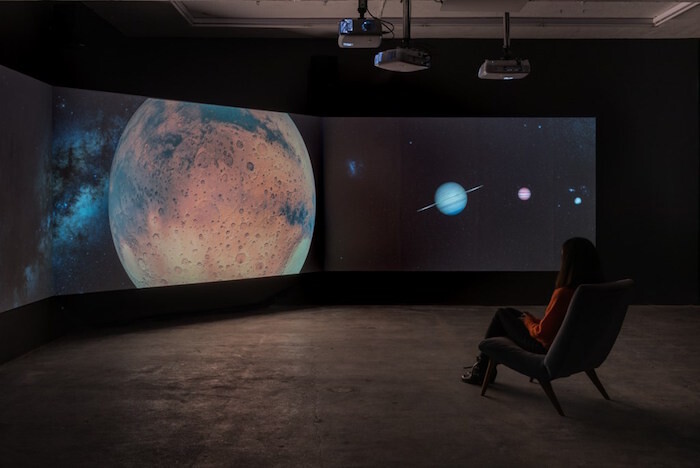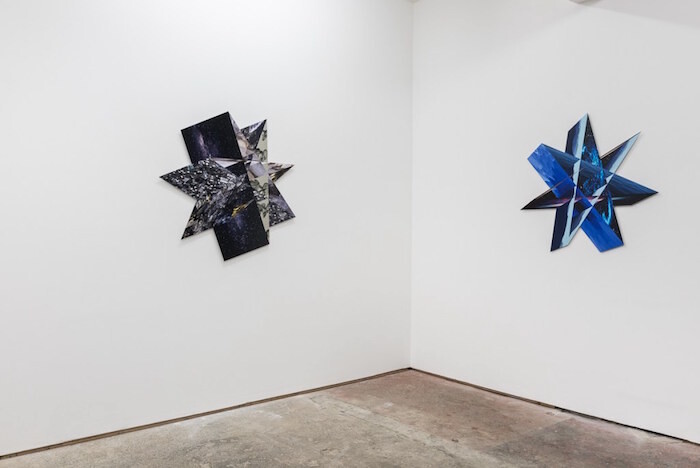In his three-volume book Principles of Geology (1830-1833), Charles Lyell pioneered a theory whose clunky title belies its elegance. Uniformitarianism, as Lyell’s argument is known, suggests that the earth was shaped, over hundreds of millions of years, by incremental processes that are observable all around us: erosion, sedimentation, and so on. As Stephen Jay Gould remarks in his book Time’s Arrow, Time’s Cycle (1987): “the present must be our key to the past.”1 We can deduce how the earth was made because the forces that shaped it billions of years ago continue to do so today. Thanks in large part to Lyell’s work, geological accounts of the earth’s formation have supplanted Biblical ones. Scripture tells us that our planet was created 6,000 years ago. We now know that it is closer to 4.55 billion years old. The discovery of deep time—in John McPhee’s evocative phrase— compares with the Copernican and Darwinian revolutions in its importance to science. Deep time is also a vertiginous concept. Geological history mocks the brief careers of civilizations, dozens of which may rise and fall in the time it takes a coastline to crumble into the sea.
A dismal fact of life in the Anthropocene—the geological epoch defined by the planetary change wrought by humans—is how globally destructive our influence as a species can be. The present no longer seems the “key to the past” so much an alarming indication of the future: rising temperatures, rising sea levels, rising likelihood of nuclear war. Then again, as David Blandy notes in his video installation The End of the World (all works 2017), the fear of planetary destruction has been with us since time immemorial. “Everyone’s seen the darkness coming,” he says. “It’s nothing new.” Far from marking a definitive end, apocalypse is a state of mind: a catastrophe perpetually deferred. While it undoubtedly induces anxiety—is perhaps itself a manifestation of anxiety—apocalypse is also an aesthetic. Imagining the end times produces images filled with wonder and terror. Consider the Book of Revelation: “And the stars of heaven fell unto earth.”2 Everyone dies, of course. But the process itself is quite beautiful. Skies collapse, the ground cracks open, and our planet is flooded with light.
In contrast to catastrophism—the belief that the earth was formed in a sudden, violent way—uniformitarianism rejects the possibility of explosive endings. It privileges a cyclical and anticlimactic view of geological development, an essentially aimless scheme of rise and fall, uplift and erosion. Ironically, Lyell framed his gradualist theory as a decisive and irreversible break with the past. In Principles of Geology, he described his life’s work as “a desire manifested to cut, rather than patiently to untie, the Gordian knot.’”3 Although his recent works touch on various geological concepts, and borrow strategies of display and presentation from popular science, Blandy’s approach is more patient than Lyell’s. The British artist has said that he makes work to “try to think through irresolvable problems.”4 Rather than cut the knot, he teases out interwoven threads of implication and coincidence.
Blandy’s solo show at London’s Seventeen gallery comprises three video installations modeled on familiar environments: a planetarium (the titular, three-screen video The End of the World, which features a mesmerising digital animation of the solar system); an archive (The Archive, made in collaboration with Claire Barrett, which features a virtual reality headset offering views of domestic spaces cluttered with cardboard boxes and paper files); and a high street phone shop (HD Lifestyle, in which videos play on multiple phone, laptop, and monitor screens arranged in a glass display case). By situating his video works in these quotidian environments, Blandy suggests that the weighty ideas he examines—mortality, catastrophe, the “sea of data” that exists on the internet—are residually present in our daily lives, integral to our interactions with newspapers, museums, and mobile phones. Paul Virilio and other accelerationist thinkers have argued that rapid technological progress carries a concomitant possibility of “nuclear disintegration” and “vehicular extermination”.5 Blandy’s interests are similar, his approach less alarmist. His scripts contain melancholic reflections on obsolescence. In The Archive, he describes print media as “lost whispers on the autumn air,” and a “cascade of fraying paper tumbling through our psyche.” The End of the World features text culled from the chat-room of Asheron’s Call, a multiplayer online role-playing game, as users ponder the imminent closure of the game’s servers, which will signal the end of their networked world. Digital apocalypse is quieter than its theological counterpart. Rather than a deadly spectacle of stars plummeting headlong into Earth, machines fall silent and screens go blank.
Blandy’s thoughtful tone lends his scripts an edge of vulnerability, which makes a refreshing change from the poseur detachment that characterises so much post-internet art. At times, his inquiries tend towards generalisation and truism: “people love machines,” he remarks in HD Lifestyle; in The End of the World, he tells us that “people have been, and continue to be, stigmatized.” Sweeping summaries have a smothering effect on nuance, whereas Blandy’s use of juxtaposition is precise and illuminating. He offers up visual and thematic contrasts—between geological epochs and digital archives, or out-of-focus photography and the seventeenth-century polymath Athanasius Kircher—that have a generously propositional feel to them, offering constellations of ideas without forcing conclusions. This open-endedness feels like the product of Blandy’s drive to think through irresolvable problems, while the catastrophist idea that the world will end with a bang, not a whimper, seems the result of a strictly linear view of history. Blandy’s approach to his material more closely resembles the incremental ethos of uniformitarianism, and shows that art can also be a process of accumulation and erosion, of shaping and re-shaping. The prospect of apocalypse will always be terrifying, but solace can be sought in a comforting flipside: if the world is perpetually ending, it is also forever beginning afresh.
Stephen Jay Gould, Time’s Arrow, Time’s Cycle (Cambridge: Harvard University PRess, 1987), 105.
Revelation 6:13, King James Bible (1611). www.kingjamesbibleonline.org/Revelation-6-13.
Charles Lyell, Principles of Geology (London: Penguin Classics, 1833/1997), 6.
Interview with the artist. http://www.vdrome.org.
Paul Virilio, Speed and Politics (Cambridge: MIT Press, 1986), 134.






